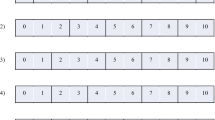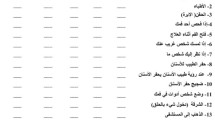Abstract
The aim of this article is to review and evaluate behavioral and physiological measurement techniques frequently used to assess dental anxiety and fear in children. Attention is given to the data collected, the empirical findings obtained, and the availability of normative data. The main focus, however, is on the reliability and validity. Results show that all questionnaires are open to criticism. Of the behavioral measures, Melamed's Behavior Profile Rating Scale is to be preferred to Frankl's Rating Scale, Venham Rating Scales, and Visual Analogue Scales. The main reasons are that Melamed's BPRS measures the behavior of the child more precisely and that it has superior psychometric properties. Furthermore, because of their practical, conceptual, and psychometric problems, physiological measures at this stage are found to be less appropriate for assessing dental fear in children. It is concluded that a behavioral measure is not always the ideal, but often the only available technique for assessing dental fear in children.
Similar content being viewed by others
References
Alwin, N. P., Murray, J. J., & Britton, P. G. (1991). An assessment of dental anxiety in children.British Dental Journal, 171, 201–207.
Bailey, P. M., Talbot, A., & Taylor, P. P. (1973). A comparison of maternal anxiety levels manifested in the child dental patient.Journal of Dentistry for Children, 40, 227–284.
Boj, J. R., & Davila, J. M. D. (1989). A study of behavior modification for developmentally disabled children.Journal of Dentistry for Children, 49, 432–435.
Cooper, C., Watts, J., & Kelly, M. (1987). Job satisfaction, mental health and job stressors among general dental practitioners in the U.K.British Dental Journal, 158, 77–81.
Cronbach, L. J. (1990).Essentials of psychological testing. New York: Harper & Row.
Del Gaudio, D. J., & Nevid, J. S. (1991). Training dentally anxious children to cope.Journal of Dentistry for Children, 58, 31–37.
Fenlon, W. L., Dobbs, A. R., & Curzon, M. E. J. (1993). Parental presence during treatment of the child patient: A study with British parents.British Dental Journal, 174, 23–28.
Frankl, S. N., Shiere, F. R., & Fogels, H. R. (1962). Should the parent remain with the child in the dental operatory?Journal of Dentistry for Children, 29, 150–163.
Greenbaum, P. E., Lumley, M. A., Turner, C., & Melamed, B. G. (1993). Dentist's reassuring touch: effects on children's behavior.Paediatric Dentistry, 15, 20–24.
Hosey, M. T., & Blinkhorn, A. S. (1995). An evaluation of four methods of assessing the behavior of anxious child dental patients.International Journal of Paediatric Dentistry, 5, 87–95.
Johnson, R., & Baldwin, D. C., Jr. (1968). Relationship of maternal anxiety to the behavior of young children undergoing dental extraction.Journal of Dental Research, 47, 801–805.
Johnson, R., & Baldwin, D. C., Jr. (1969). Maternal anxiety and child behavior.Journal of Dentistry for Children, 20, 272–276.
Johnson, R., & Machen, J. B. (1973). Behavior modification techniques and maternal anxiety.Journal of Dentistry for Children, 20, 272–276.
Kent, G. G., & Blinkhorn, A. S. (1991).The psychology of dental care (Chapter 3). Oxford: Wright.
Klingberg, G., Vannas Löfqvist, L., & Hwang, C. P. (1995). Validity of the Children's Dental Fear Picture test (CDFP).European Journal of Oral Sciences, 103, 55–60.
Klingman, A., Melamed, B. G., Cuthbert, M. I., & Hermecz, D. A. (1984). Effects of participant modeling on information acquisition and skill utilization.Journal of Consulting and Clinical Psychology, 52, 414–422.
Klorman, R., Ratner, J., Arata, C. L. G., King, J. B., & Sveen, O. B. (1978). Predicting the child's uncooperativeness in dental treatment from maternal trait, state and dental anxiety.Journal of Dentistry for Children, 45, 62–67.
Klorman, R., Michael, R., Hilpert, P. L., & Sveen, O. B. (1979). A further assessment of predictors of the child's behavior in dental treatment.Journal of Dental Research, 58, 2338–2343.
Koenigsberg, S. R., & Johnson, R. (1972). Child behavior during sequential dental visits.Journal of the American Dental Association, 85, 128–132.
Koplik, E. K., Lamping, D. L., & Reznikoff, M. (1992). The relationship of mother-child coping styles and mothers' presence on children's response to dental stress.The Journal of Psychology, 126, 79–92.
Lindsay, S. J. E., & Roberts, G. J. (1980). Methods for behavioral research on dentally anxious children.British Dental Journal, 149, 149–153.
Lore, R. K. (1966). Palmar sweating and transitory anxiety in children.Child Development, 37, 115–123.
Machen, J. B., & Johnson, R. (1974). Desensitization, model learning, and the dental behavior of children.Journal of Dental Research, 53, 83–87.
Mayer, R., & Weber, E. (1992). Kinderbehandlung in der zahnärztlichen Praxis-Bestimmung des Streβhormons Cortisol im Speichel.Anästhesie, 6, 993–996.
Mejàre, I., Ljungkvist, B., & Quensel, E. (1989). Pre-school children with uncooperative behavior in the dental situation. Some characteristics and background factors.Acta Odontologica Scandinavica, 47, 337–345.
Melamed, B. G., Hawes, R. R., Heiby, E., & Glick, J. (1975). Use of filmed modeling to reduce uncooperative behavior of children during dental treatment.Journal of Dental Research, 54, 797–801.
Melamed, B. G., Weinstein, D., Hawes, R. R., & Katin-Borland, M. (1975). Reduction of fear-related dental management problems with use of filmed modeling.Journal of the American Dental Association, 90, 822–826.
Melamed, B. G., Yurcheson, R., Fleece, E. L., Hutcherson, S., & Hawes, R. (1978). Effects of film modeling on the reduction of anxiety-related behaviors in individuals varying in level of previous experience in the stress situation.Journal of Consulting and Clinical Psychology, 46, 1357–1367.
Melamed, B. G., Bennett, C. G., Jerrell, G., Ross, S. L., Bush, J. P., Hill, C., Courts, F., & Ronk, S. (1983). Dentists' behavior management as it affects compliance and fear in pediatric patients.Journal of the American Dental Association, 106, 324–330.
Nathan, J. E., Venham, L. L., Stewart West, M., & Werboff, J. (1988). The effects of nitrous oxide on anxious young pediatric patients across sequential visits: a double-blind study.Journal of Dentistry for Children, 55, 220–230.
Neverlien, P. O., & Backer Johnsen, T. (1991). Optimism-pessimism dimension and dental anxiety in children aged 10–12 years.Community Dentistry and Oral Epidemiology, 19, 342–346.
Parkin, S. F. (1988). The assessment of two dental anxiety rating scales for children.Journal of Dentistry for Children, 55, 269–272.
Parkin, S. F. (1989). Assessment of the clinical validity of a simple scale for rating children's dental anxiety.Journal of Dentistry for Children, 56, 40–43.
Roberts, S. M., Wilson, C. F. G., Seale, N. S., & McWhorter, A. G. (1992). Evaluation of morphine as compared to meperidine when administered to the moderately anxious pediatric dental patient.Paediatric Dentistry, 14, 306–313.
Rowland, A., Lindsay, S. J. E., Winchester, L., & Zarkowska, E. (1989). A study of children's facial expressions of pain and fear during dental treatment and their relationship to disruptive behavior and reports of pain and fear.Journal of Paediatric Dentistry, 5, 115–120.
Schuurs, A. H. B., & Hoogstraten, J. (1993). Appraisal of dental anxiety and fear questionnaires: A review.Community Dentistry and Oral Epidemiology, 21, 329–339.
Sermet, O. (1974). Emotional and medical factors in child dental anxiety.Journal of Child Psychology and Psychiatry, 15, 313–321.
Shaw, O. (1975). Dental anxiety in children.British Dental Journal, 139, 134–139.
Siegel, L. J., Smith, K. E., Cantu, G. E., & Posnick, W. R. (1992). The effects of using infection-control barrier techniques on young children's behavior during dental treatment.Journal of Dentistry for Children, 59, 17–22.
Stark, L. J., Allen, K. D., Hurst, M., Nash, D. A., Rigney, B., & Stokes, T. F. (1989). Distraction: its utilization and efficacy with children undergoing dental treatment.Journal of Applied Behavioral Analysis, 22, 297–307.
Stouthard, M. E. A. (1989).Angst voor de tandheelkundige behandeling. Ontwikkeling en validatie van een vragenlijst voor onderzoek en praktijk. Amsterdam: De Kreeft.
Swallow, J. N., & Sermet, O. (1972). The measurement of anxiety.Journal of the International Association of Dentistry for Children, 3, 7–10.
Vandermaas, M. O., Hess, T. M., & Baker-Ward, L. (1993). Does anxiety affect children's reports of memory for a stressful event?Applied Cognitive Psychology, 7, 109–127.
Veerkamp, J. S. J., Gruythuysen, R. J. M., van Amerongen, W. E., & Hoogstraten, J. (1993). Dental treatment of fearful children using nitrous oxide. 3. Anxiety during sequential visits.Journal of Dentistry for Children, 60, 175–182.
Venham, L. L. (1979). The effect of mother's presence on child's response to dental treatment.Journal of Dentistry for Children, 46, 219–225.
Venham, L. L., & Quatrocelli, S. (1977). The young child's response to repeated dental procedures.Journal of Dental Research, 56, 734–738.
Venham, L. L., Bengston, D., & Cipes, M. (1978). Parent's presence and the child's response to dental stress.Journal of Dentistry for Children, 45, 213–217.
Venham, L. L., Bengston, D., & Cipes, M. (1977). Children's responses to sequential dental visits.Journal of Dental Research, 56, 454–459.
Venham, L. L., Murray, P., & Gaulin-Kremer, E. (1979a). Child-rearing variables affecting the preschool child's responses to dental stress.Journal of Dental Research, 58, 2042–2045.
Venham, L. L., Murray, P., & Gaulin-Kremer, E. (1979b). Personality factors affecting the preschool child's responses to dental stress.Journal of Dental Research, 58, 2046–2051.
Wright, G. Z., & Alpern, G. D. (1971). Variables influencing children's cooperative behavior at the first dental visit.Journal of Dentistry for Children, 38, 1–5.
Author information
Authors and Affiliations
Rights and permissions
About this article
Cite this article
Aartman, I.H.A., van Everdingen, T., Hoogstraten, J. et al. Appraisal of behavioral measurement techniques for assessing dental anxiety and fear in children: A review. J Psychopathol Behav Assess 18, 153–171 (1996). https://doi.org/10.1007/BF02229114
Accepted:
Issue Date:
DOI: https://doi.org/10.1007/BF02229114




